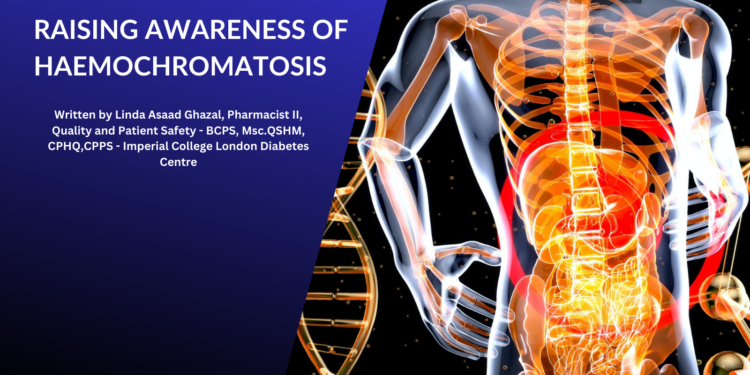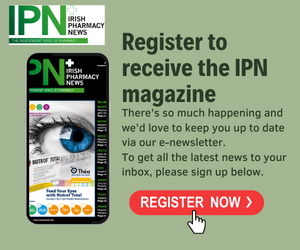Written by Miriam Forde, Executive Director and Margaret Mullett, Honorary President, Irish Haemochromatosis Association
Haemochromatosis is more common in Ireland than anywhere in the world, affecting one in 83 people, write Miriam Forde and Margaret Mullett, Irish Haemochromatosis Association.
Haemochromatosis is a condition where too much iron is absorbed and stored in the body. It can cause liver cirrhosis, liver cancer, arthritis, diabetes and general fatigue. It is hereditary and is more common in Ireland than anywhere in the world, where one in 5 people are carriers and one in 83 people are pre-disposed to be at risk.
Haemochromatosis is often underdiagnosed, partly because of low public awareness of the condition, but also because symptoms, including fatigue, joint pain and depression, can be similar to a number of other disorders. If undetected and untreated, it can result in premature death, so early diagnosis is essential to avoid organ damage.
Haemochromatosis can easily be managed through venesections or phlebotomies, which remove iron from the body. Diagnosis of haemochromatosis should be no barrier to a patient leading a normal life.
Symptoms
It is important to screen for hereditary haemochromatosis (HH) and perform serum ferritin and transferrin saturation tests on patients who present with symptoms or who have a family history of haemochromatosis.
General presentations include fatigue, lethargy, sleep disturbance and weakness. Haemochromatosis patients can present with musculoskeletal
problems, including vague aches and pains, exercise-induced joint pain, osteoporosis, early onset osteoarthritis, chondrocalcinosis (wrists, knees, hips and symphysis pubis, acutely as pseudogout). Arthropathy is a common symptom usually affecting the second and third MCP joints.
Other presentations include:
• Hepatic: abnormal liver function tests, hepatomegaly, cirrhosis;
• Cardiac arrhythmia: congestive cardiac failure, cardiomyopathy;
• Endocrine presentations: amenorrhoea, diabetes, decrease in libido, infertility;
• Skin: pigmentation, porphyria cutanea tarda; abdominal pain and thyroid and parathyroid abnormalities.
Diagnosis
A simple blood test to check iron status can confirm or rule out iron overload. If both the SF and the TS levels are raised, then a genetic test is carried out to confirm diagnosis. An SF of > 200ug/L in premenopausal women, and > 300ug/L in men and postmenopausal women suggests that the patient may be ironoverloaded. This should prompt a test for fasting TS. Fasting TS of > 45% is strongly suggestive of haemochromatosis and should prompt a test for the HFE gene.
Treatment
When diagnosed early, haemochromatosis responds well to therapeutic phlebotomy or venesection ie. the removal of a unit of blood. Each 500ml of blood withdrawn contains 250mg
iron. The aim is to bring the SF level down to 50-100μg/L. The frequency of venesection depends on initial SF. Treatment initially can be intensive ie weekly or bi-weekly phlebotomy to rapidly reduce ferritin levels. After a normal level has been achieved, the patient is in the maintenance phase and thereafter may require three or four sessions per year. GP practices now provide therapeutic phlebotomy for patients, however many patients continue to attend venesection units and clinics in hospital settings.
Blood Donation
Since 2019, the Irish Blood Transfusion Service (IBTS) accepts the blood of HH patients who are in maintenance and who are eligible to donate blood. Patients can attend by appointment up to four times a year (minimum of 90 days between phlebotomies). The patient’s hereditary haemochromatosis will continue to be managed by their GP or Consultant, including monitoring of ferritin levels. Patients must have had at least one venesection prior to donation. The cut-off age for eligibility is 69 for first-time HH blood donors. (visit www.giveblood.ie)
Nutrition & Lifestyle
• Patients should be encouraged to eat a well-balanced diet and drink plenty of water.
• Patients should be advised to avoid iron and Vit C supplements and iron-fortified food. There is no need for a
patient undergoing phlebotomy to be prescribed a low-iron diet as the amount of iron removed by phlebotomy is far greater than that present in even a high-iron diet.
• Alcohol consumption should be kept to a minimum as moderate to heavy alcohol consumption increases the risk of cirrhosis. Abstinence is recommended in those with liver cirrhosis.
• Patients with elevated body iron should avoid raw shellfish because of the risk of Vibrio vulnificus (bacterial food poisoning)
We regret that a nationally funded screening programme for HH has not yet been established and propose that the National Screening Advisory Committee review a submission to screen for the disorder in Ireland.
Miriam Forde is Executive Director and Margaret Mullett is Honorary President of the Irish Haemochromatosis Association. Information and resources on haemochromatosis are available on request from Tel: 01 873 5911 Email: info@haemochromatosis. ie. World Haemochromatosis Awareness Week takes place every year from the 1st to the 7th June. If your hospital would like to display information materials during that time, please contact the Association.
For more information, visit www.haemochromatosis.ie










